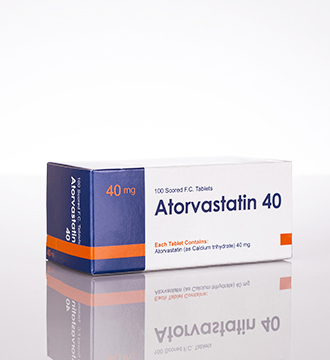 |
General Description |
immune-mediated necrotizing myopathy, hepatic necrosis, hepatic failure, rhabdomyolysis, renal tubular obstruction, myoglobinuria, renal failure, cirrhosis, pancreatitis tendon rupture, vasculitis, erythema multiforme, hemolytic anemia, angioedema, toxic epidermal necrolysis, lupus-like symptoms, Stevens-Johnson syndrome, anaphylactoid reactions, stroke |
 |
Direction of use |
Adult: 1) Hyperlipidemia ïž Primary hypercholesterolemia and mixed dyslipidemia Maintenance: 10-80 mg PO once daily. After initiation and/or upon dose titration, check lipid levels after 2-4 weeks and adjust dose accordingly. 2) Hypertriglyceridemia 10 mg PO once daily initially, Maintenance: 10-80 mg PO once daily maintenance After initiation and/or upon dose titration, check lipid levels after 2-4 weeks and adjust dose accordingly. 3) Primary dysbetalipoproteinemia Maintenance: 10-80 mg PO once daily, after initiation and/or upon dose titration, check lipid levels after 2-4 weeks and adjust dose accordingly. 4) Homozygous familial hypercholesterolemia 10-80 mg PO once daily 5) Cardiovascular Disease Prevention 10-80 mg PO once daily Pediatric: ïž Heterozygous Familial Hypercholesterolemia Indicated as an adjunct to diet to reduce Total-C, LDL-C, and apo B levels in boys and postmenarchal girls aged 10-17 years with HeFH who have an inadequate response to diet alone (ie, LDL-C remains âĨ190 mg/dL or LDL-C remains âĨ160 mg/dL and there is positive family history or early CV disease or 2 or more other CVD risk factors present) <10 years: Safety and efficacy not established âĨ10 years: Initially, 10 mg PO once daily; titrate at 4-week intervals; not to exceed 20 mg PO once daily ïž Homozygous Familial Hypercholesterolemia (Off-label) <10 years: Safety and efficacy not established âĨ10 years: 10-40 mg PO once daily |








